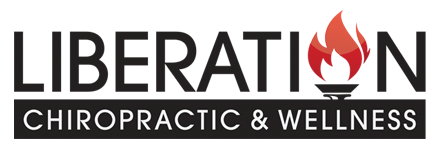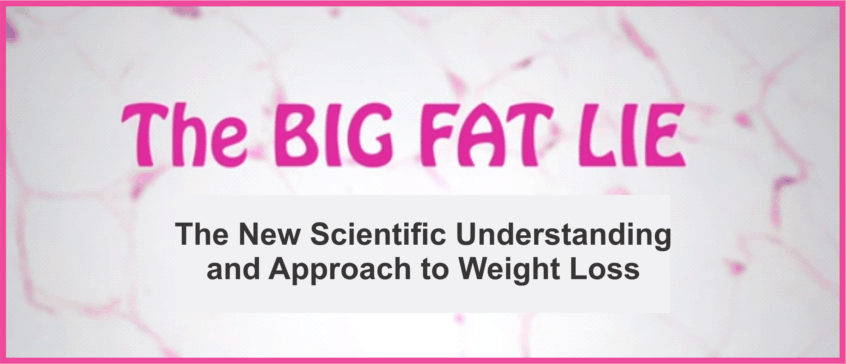Dr. Mike Bucknell / April 1, 2014 / Nutrition, Chiropractic, Supplementation
In this presentation “The BIG FAT LIE” Dr. Michael Bucknell, founder and owner of Liberation Chiropractic & Wellness in Mobile Alabama, as well as Innate Innovations, Incorporated and REDBAR Espresso & Market, takes the attendees through what current research shows about not just weight loss but the majority of chronic disease plaguing the world today.
You’ll learn things that the current media, and medical community both, are still in the dark on but will likely be commonplace knowledge a decade or two from now. If you have not watched it yet, be sure to watch the DEAFicient and DEAFiciencies Fullfilled workshops that precede this as the information is directly relevant and will fill many gaps.
What Does the Research Show?
All the newest research shows – and it shouldn’t be a surprise – that everything is tying together. All the major diseases that everyone is dealing with:
- Chronic Fatigue
- Cancer
- Diabetes
- Heart Disease
- Alzheimer’s Disease
- Parkinson’s Disease
- ADHD
- Autism
…all of them are going back to the same things. What you see on both sides, the medical and the natural side of things, they’re not really getting to the cause of things. The medical side sees a diagnosis and throws a ‘magic drug’ at it, never on target with what the actual causes are. The natural side isn’t doing much better in many instances because they’re not really getting down to the basic cause either.
Hopefully, this presentation will help you see things beginning to unfold as to where these problems are really rooted. It will show you the key, simple, basic things that you just must do and why. It’s all coming back to the most basic things!
The First Lie: Fat Makes You FAT
Eating fat does not lead to obesity directly. It’s the combination of toxic overload and the resulting inability to burn fat that leads to accumulation of fat for the purpose of INTELLIGENT SELF PRESERVATION on behalf of the wisdom of Innate Intelligence. What does that mean?
Every living thing has inside what’s called Innate Intelligence. When you’re born, you don’t need to learn how to breathe, you don’t need to learn how to make your heart beat, your brain doesn’t need education on these things. In fact, education sometimes does the opposite – it takes us further away from that innate wisdom that you might call ‘nature’ or ‘nurture’, you might call it automation.
But the reality is, that power of innate intelligence is the greatest power you have as an asset. It is the doctor within, the thing that keeps you alive and keeps you functioning every single day of your life. It even puts you to sleep for so many hours at night so that it can do its thing without your interference.
That intelligent self-preservation is a function of your immune system in a sense. The accumulation of fat is your body’s way of protecting itself.

What Does the Research Show?
While water soluble toxins are easily excreted (detoxified) via the blood, kidneys, perspiration, etc., FAT soluble toxins are not as easily dealt with. These fat-soluble toxins are often man-made, hence have no natural means of elimination from the body.
Fat soluble toxins include: heavy metal products, pesticides, preservatives, food additives, pollutants, plastics and all the other myriad of chemicals we’re exposed to every day.
Where do a lot of these toxins come from? They’re petroleum based – they are derived from oil. Were our bodies ever intended to consume petroleum? Not at all, no more than a cow was intended to eat corn!
All these are lipophilic, meaning they have an affinity for fat – they like fat and bind to it – Where do they go? To the Liver (causing fatty liver), Blood, Adipose Tissue (Fat), Brain and Nervous System. These lipophilic toxins must go somewhere, so they go toward fat. Does your body want them going to your liver? No, but that’s where they go first because the liver is the organ that tries to detox the body.
When it can’t do anything with it, it sends it to the blood, then it goes either to the nervous system or to fat. Knowing that innate intelligence wants to maintain and preserve itself, it does anything possible to keep the toxins out of the brain, so it creates ‘storage depots’ where it’s packed away in different areas of the body. And then we complain, “Why can’t I get rid of it?â€
If this fat leaves those ‘storage areas’ it will go to the brain and nervous system, and we don’t want that! It must have a proper detoxification system. That’s what we’ll discuss in this article.
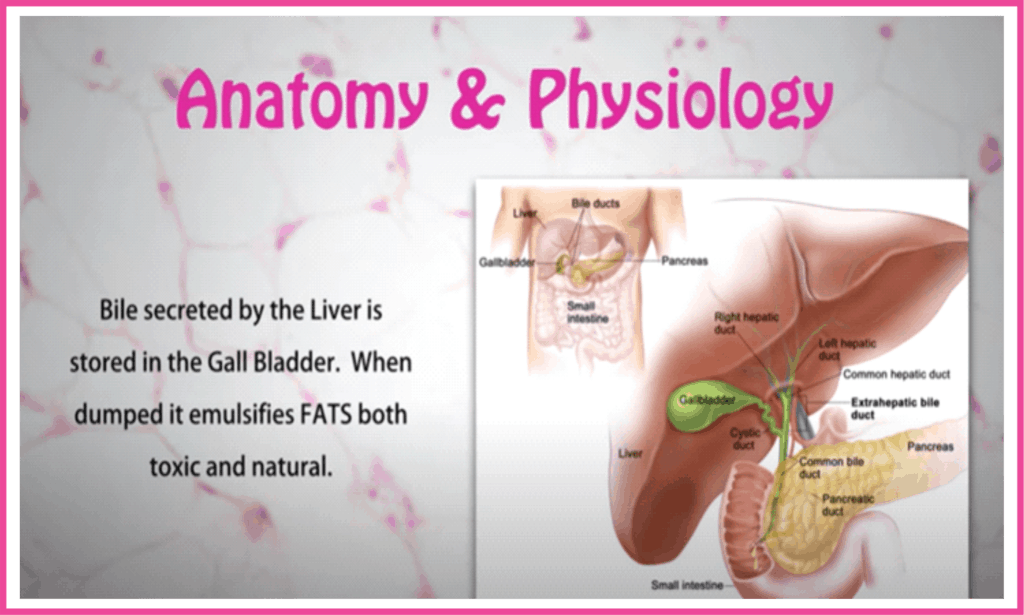
One Important Role of the Liver
Bile is secreted by the liver, one of the most important organs in the body second to the brain because it processes everything that goes through the body. The bile goes through a small duct and goes into the small intestine. Bile is a salt that is designed to emulsify fats. Then there’s the pancreas that produces all the enzymes that break down proteins and carbohydrates.
The liver also stores bile in the gall bladder for future use. Consider this scenario: say you go out to the steakhouse and eat an obscene amount of steak. (The average person needs only 6 ounces of protein per day – not per meal – per day.) Who orders a 6-ounce steak? Hardly anyone! Everyone orders the 10, 12, 16, 24-ounce steak and they consume all that (usually feed lot corn fed) fat!
What Does the Gall Bladder Do?
So, the gall bladder screams, “Emergency!†and squeezes itself to pour bile salts into the gut so that it can start emulsifying all the fat to be digested. When the system is so stressed out by doing this over and over again, you can see why the gall bladder goes bad and gets “sludgyâ€.
So, people go and get their gall bladders removed because, “Come on, You don’t need a gall bladder!†That’s one of those organs that they say ‘evolutionarily, you don’t need’, as if it’s a leftover piece. It’s not a “left overâ€! You must have it there to produce bile salts when they’re needed at the right time. If you don’t have a gall bladder, you’re not digesting fats properly and you’d better be taking bile salts!
While the liver and the gall bladder work to emulsify all fats, they can’t tell the difference between good and bad fats. That’s where G.A.L.T. comes in…
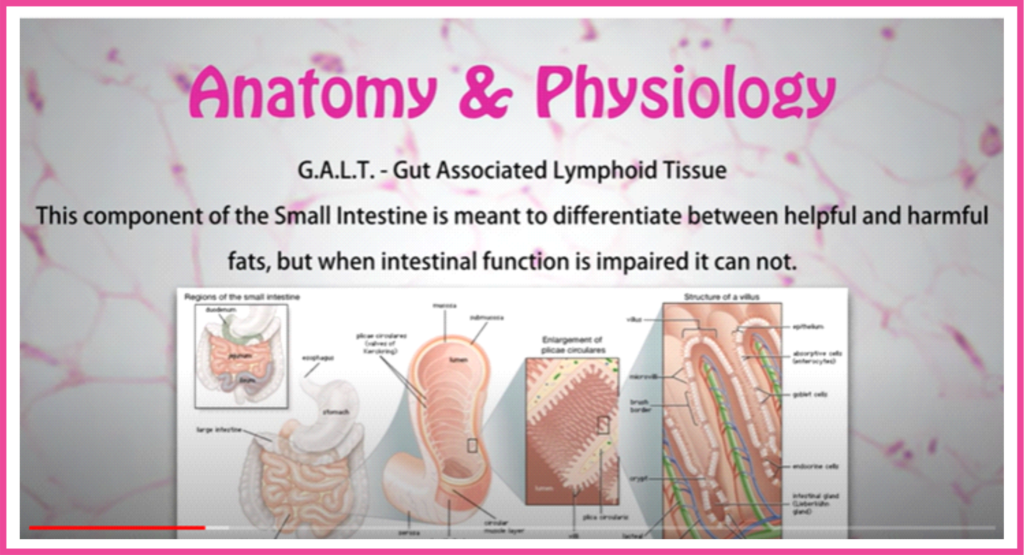
Gut Associated Lymphoid Tissue
G.A.L.T. is the body’s component of the small intestine that differentiates between helpful and harmful fats. Throughout the small intestine is an elaborate, huge surface area network of gut lining and various villi (like small fingers) that work to absorb nutrients from food and add digestive secretions.
When stretched out, the surface area of the small intestine is vast, allowing for appropriate digestion and nutrient absorption. But when you’re not digesting fats properly and getting toxic fats, the tiny microvilli begin to clump together and the gut associated lymphoid tissue can’t do its job.
Remember, most toxic fats are basically petroleum products in one form or another. Imagine pouring motor oil onto your hair. What happens? It sticks together and “clogs upâ€. The same thing happens to the tiny, microscopic hairlike intestinal villi when it can’t digest toxic fats.
As the cycle continues and gets worse, it causes leaky gut syndrome. Now you have tears in the delicate lining and breaks in the system that allow proteins, bacteria and other things to go right through the intestinal wall and into the bloodstream. The result? All the troubling digestive problems we see today – a big mess!

What Is Intestinal Plaque?
Intestinal plaque, or mucoid plaque, is most often caused by chronic ingestion of indigestible toxic fats such as from pork, vegetable oil, canola oil and anything else that causes mucus release in the intestines. This includes all the motor oil, petroleum-based products we discussed earlier – anything in your system that is an indigestible oil.
This causes mucus to be released into the system to try protecting itself by pushing toxins away from the intestinal villi. If the body detects a foreign substance you’ve eaten, it produces this mucus to push the toxins right out of the body in a short time. The process is supposed to be short-lived, but if you keep on eating toxic materials, your body keeps producing mucus on top of mucus.
Pretty soon, you have mucoid plaque that hardens and literally turns into ‘rubber’ and begins to ‘cake up’ inside your intestinal walls. So, that huge, beautiful surface area of the intestines that’s supposed to absorb nutrients and emulsify fats is now gone because it’s now covered in mucoid plaque.
A Pendulous Abdomen Is the Telltale Sign…
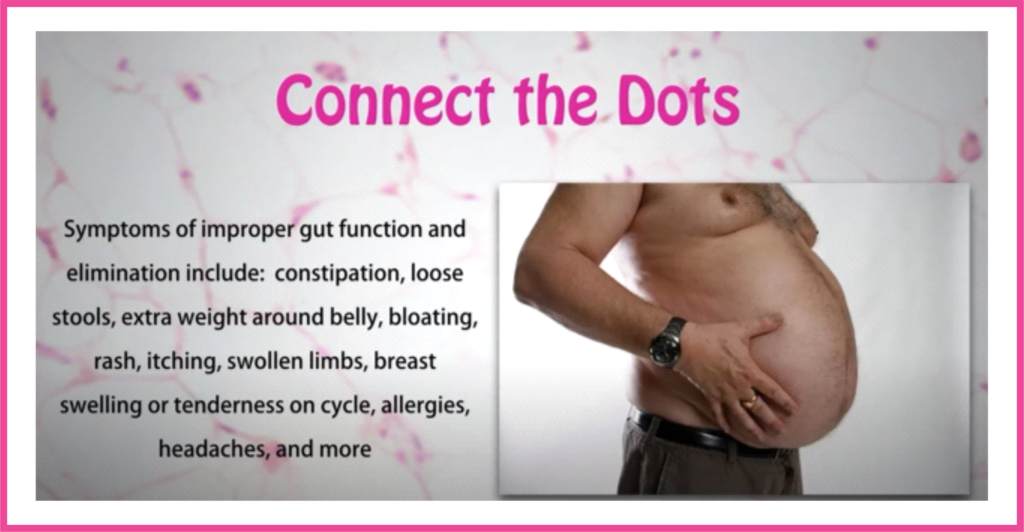
Symptoms of improper gut function and elimination include:
- Constipation
- Loose stools
- Extra weight around the belly
- Bloating
- Rash
- Itching
- Swollen limbs
- Breast swelling or tenderness on cycle
- Allergies
- Headaches and more…
In the photo above, the man’s arms are not all that big, but his abdomen is. If you were to poke him in the stomach, it would feel hard. Why? Intestinal plaque build-up on top of lots of visceral fat. Nothing is digesting properly, and everything is going through the system rancid, without proper nutrient absorption.
This is how nutritional deficiencies set up. When we eat the wrong things, over time toxins build up, the digestive system cannot function to absorb what we need for life, and this ultimately leads to the numerous chronic diseases we see today.
Throughout history, there have been doctors who have said that the intestinal system is the key to health. Many have purported that health is all about good digestion. While the digestive system couldn’t function without the brain and nervous system, we nonetheless need both working together.
Gluten and Lactose Intolerance
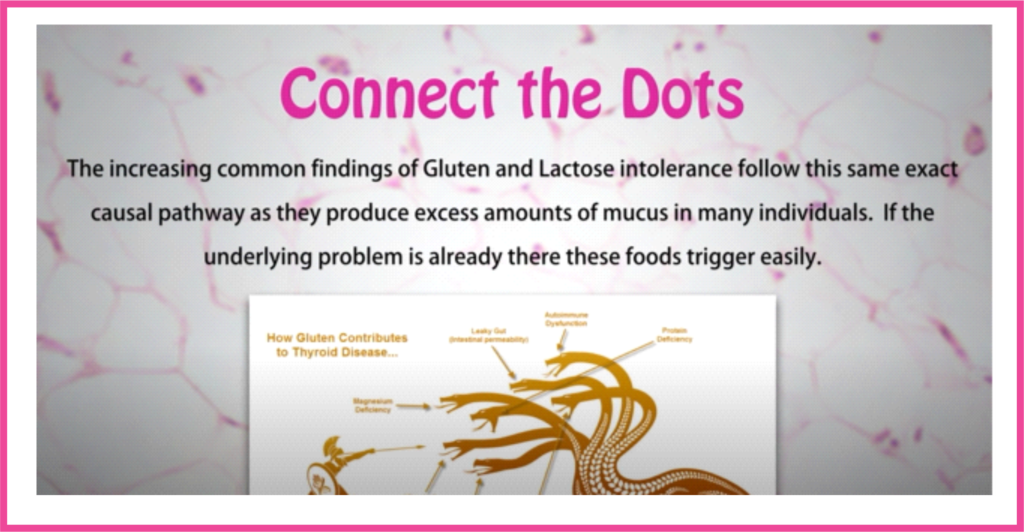
The increasingly common findings of gluten and lactose intolerance follow this same exact causal pathway as they produce excess amounts of mucus in many individuals. If the underlying problem is already there, these foods trigger easily.
When you eat gluten and lactose (for many individuals), they produce the same mucus response, and it aggravates the same pathway. So, while they may not be THE problem, they are definitely aggravating the problem.
Case in point: when one person eats gluten it may cause a response, while another person doesn’t have the same response. So it’s not the food itself, it has to be something earlier in the digestive chain than that. It’s the differences in the conditions of each person’s digestive system itself.
I highly recommend that you go back and watch the DEAFicient and DEAFiciencies Fullfilled workshops, then consider all the above points and tie it all together for yourself.
Candida Albicans
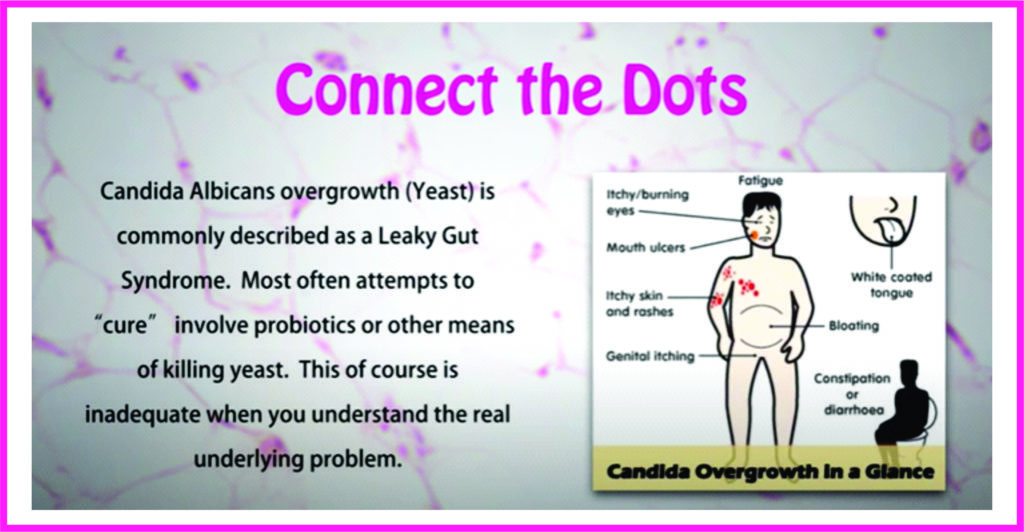
Who’s ever been to a health food store and they tell you, “Oh, you’ve got yeast!â€
Candida Albicans overgrowth (yeast) is commonly described as a Leaky Gut Syndrome problem. This causes bad things (yeast, bad bacteria, toxins, etc.) to get into your system through your damaged gut, then it gets into your bloodstream and into your tissues. This can multiply and wreak havoc all over your system.
Most often, attempts to “cure†it involve probiotics or other means of killing yeast. This of course is inadequate when you understand the real underlying problem. Why is the yeast able to grow in the first place, and how is it getting through the intestinal wall? Again, there is a prior, more systemic problem.
How do you know if you have a chronic yeast overgrowth? Some telltale signs:
- Chronic fatigue
- Itchy, burning eyes
- Mouth ulcers
- Itchy skin and rashes
- Genital itching
- White coated tongue
- Bloating
- Constipation or diarrhea
Acid Reflux
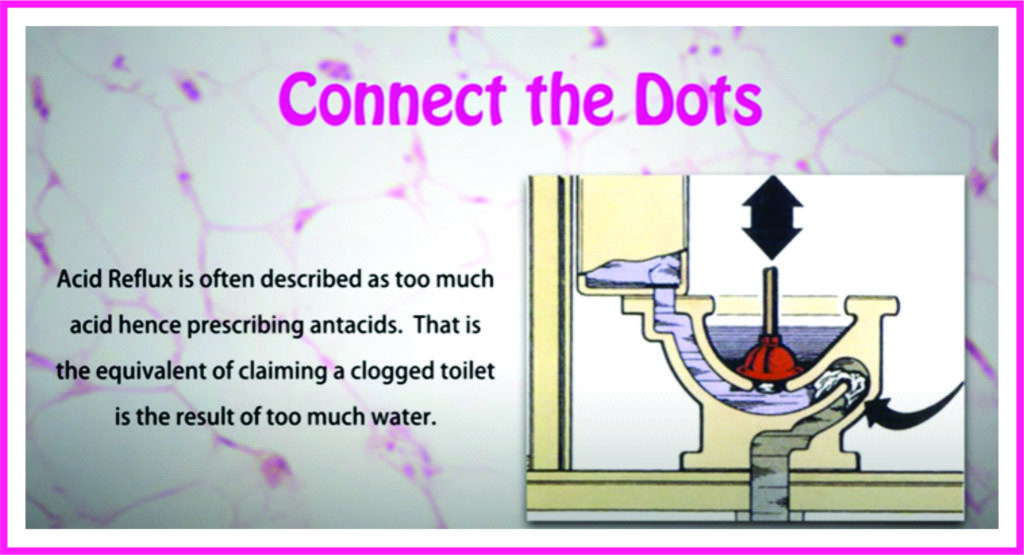
Acid reflux is often described as having too much acid in your stomach. Think about the insanity of that…what do you need to digest your food? Hydrochloric acid found in your stomach. Even if you do have too much acid, back up and ask, “Why?†It’s because you’re not digesting food properly. Why is that? Because the system is stressed. Your food doesn’t digest and ‘go through the pipes’ properly. So, what does the medical doctor prescribe? Antacids.
But being told you have too much acid in your stomach is the equivalent of claiming a clogged toilet is the result of too much water. Think about it. You see the water in the toilet bubbling up and say, “Oh, we’ve got to turn the water off!†Then your house is going to smell because you can’t flush your toilet!
It’s the same thing that happens when you start to take antacids. It makes the problem worse because food doesn’t break down properly and it comes out the other end undigested. Besides that, the research is now showing that taking antacids causes jaw and bone necrosis (meaning death of your bones).
The Liver Becomes Overwhelmed

When the liver becomes overwhelmed from toxins in the intestines, it pushes the toxins into the blood stream, which then store in fat cells, or even the Brain and Nervous System.
These toxins going into the liver signal it to put them somewhere, and when it can’t filter and release them it dumps them into the bloodstream. The bloodstream then deposits them in two places: the fat cells and the brain. Now the research is showing that this causes various brain malfunctions, such as:
- Attention Deficit Disorder
- Alzheimer’s Disease
- Parkinson’s Disease
Researchers are also finding now that Diabetes, Alzheimer’s and Parkinson’s are basically the same thing. You can see now why…
The PubMed Study
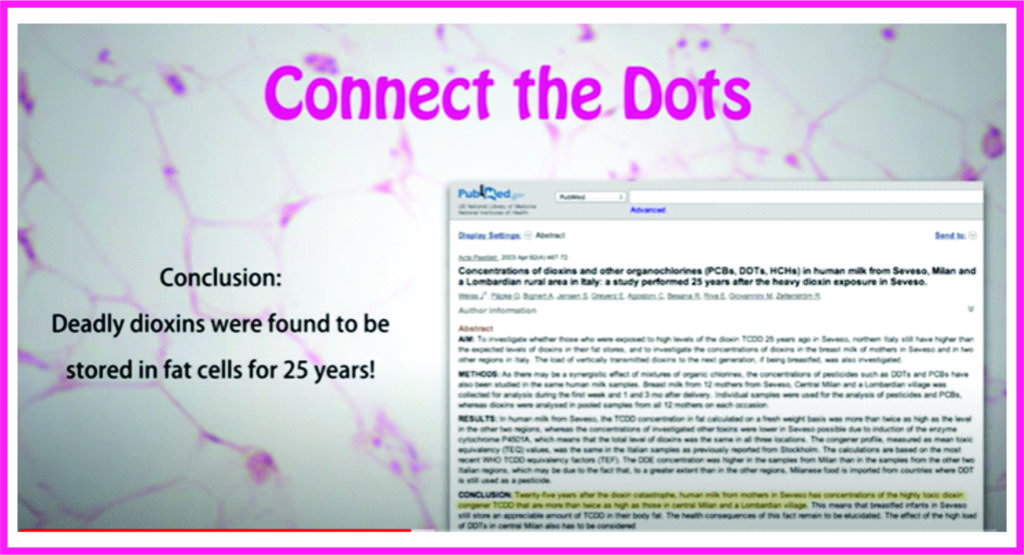
PubMed, a national database of medical research, published a study showing that “Concentrations of dioxins and other organo-chlorines (PCBs, DDTs, HCHs) in human milk from Seveso, Milan and a Lombardian rural area in Italy: A study performed 25 years after the heavy dioxin exposure in Seveso.â€
Dioxin is a very, very potent toxin – absolutely poisonous. It’s most often found around here in cow’s milk. That’s because of the way the milk is processed as well as what the cows are consuming. The FDA ‘regulates’ the ‘allowable amount’ of dioxins, yet if you pull any regular carton of milk off a store shelf, its dioxin level is beyond that ‘limit’. So, they set the limit, but they don’t regulate it.
Twenty-five years after the dioxin exposure in Seveso, Italy, the amounts of dioxins in mothers’ milk were found to be twice as high as those in Milan or a Lombardian village. So, a quarter of a century later, those toxins are still stored in the fat cells. The body is very good at storing away toxins that it can’t deal with! That’s why it’s so hard to get rid of toxin filled fat.
Zinc-Copper Balance
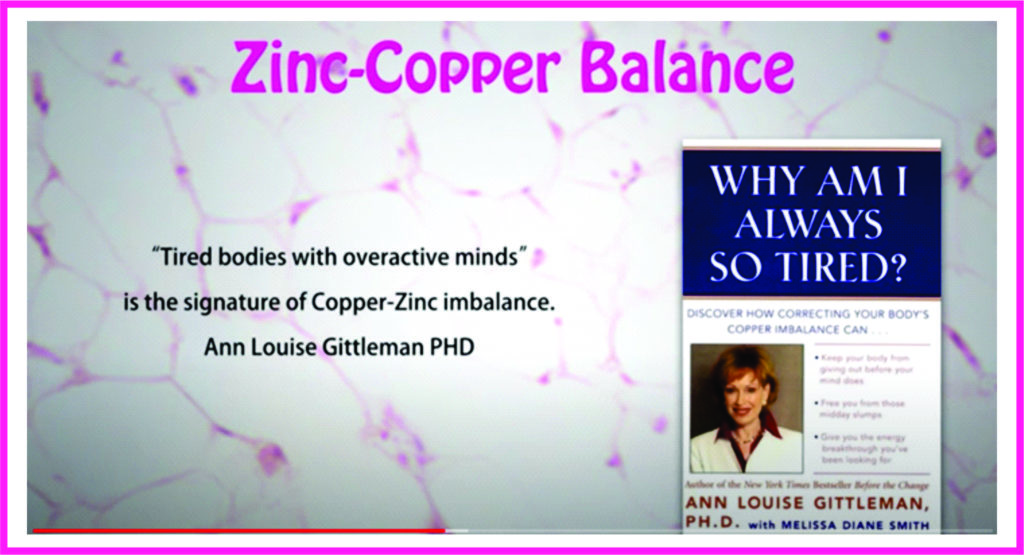
This is a critical component of this workshop – the zinc and copper balance. In the DEAFicient and DEAFiciencies Fulfilled workshops we talked about copper toxicity. This is how it all works.
Who of us are in the category of “tired bodies with overacting minds� According to Ann Louise Gittleman, PhD, the author of Why Am I Always So Tired?, this is the signature of Copper-Zinc imbalance. She really pushed through all the research on this and understanding how it all works.
Zinc and copper are both necessary trace elements in your body – you need them both, but while zinc should be in higher amounts and copper in very minimal amounts. But sometimes that proportion gets completely out of balance.
“When the diet is lacking in zinc and protein, however – and in fats to promote bile production – use of high-copper foods, and environmental copper primarily ingested through our water (from use of copper pipes) promote build-up of copper in our tissues.â€
The late Carl C. Pfeiffer, PhD, MD, formerly of the Brain-Bio Center in Princeton, New Jersey, provided us with the most comprehensive overview of nutritional problems associated with copper and zinc in his classic study “Mental and Elemental Nutrientsâ€. As he succinctly put it, “Deficiency of zinc accentuates copper excess.â€
So, when you are deficient in zinc, you ultimately develop a copper toxicity.
The Copper Quiz
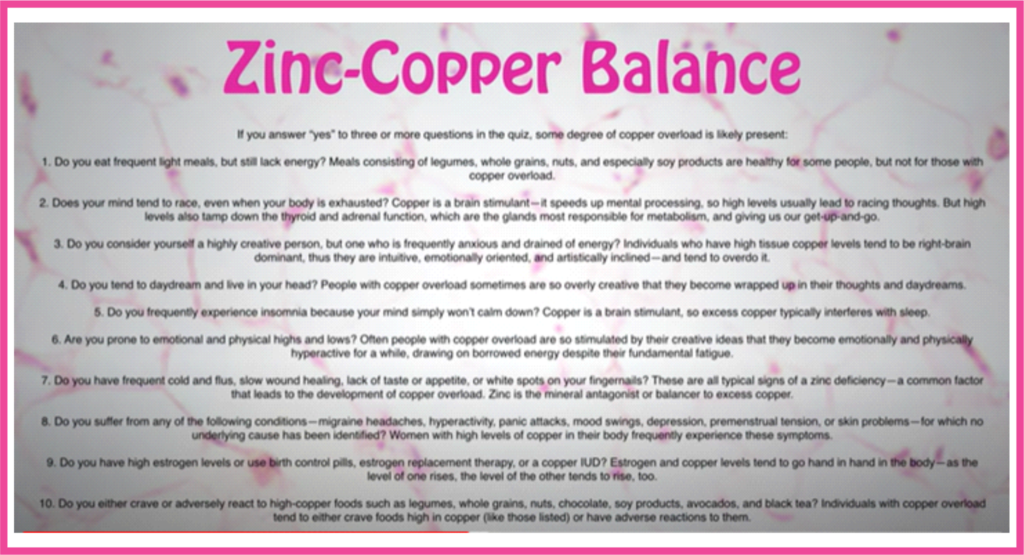
In the workshop, we passed out packets containing the following quiz developed by Ann Louise Gittleman, PhD. If you think you are an unsuspecting victim of copper overload, take this quiz and find out:
• Do you eat frequent light meals but still lack energy?
• Does your mind tend to race, even when your body is exhausted?
• Do you consider yourself a highly creative person, but one who is frequently anxious and drained of energy?
• Do you tend to daydream and live in your head?
• Do you frequently experience insomnia because your mind simply won’t calm down?
• Are you prone to emotional and physical highs and lows?
• Do you have frequent colds and flus, slow wound healing, lack of taste or appetite, or white spots on your fingernails?
• Do you suffer from any of the following conditions–migraine headaches, hyperactivity, panic attacks, mood swings, depression, premenstrual tension, or skin problems–for which no underlying cause has been identified?
• Do you have high estrogen levels or use the birth control pill, estrogen replacement therapy, or a copper IUD?
• Do you either crave or adversely react to high-copper foods such as chocolate, nuts, avocados, and soy products?
• Does your hair have a natural orange-red tint of copper-colored highlights?
• Do you have dark areas of pigmentation of skin blotches on your face?
If you have three to give affirmative answers, some degree of copper overload is likely present. A blood test would be more definitive.
Zinc Galvanized Pipes
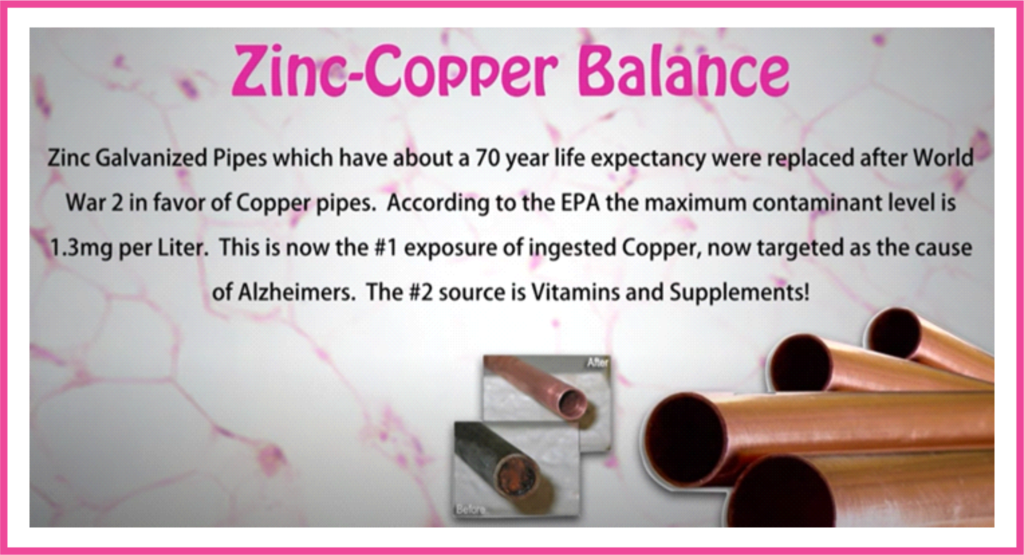
A government mandate says you must take out any zinc galvanized pipes in your home. They are banned. Why?
Because zinc galvanized pipes only had about a 70-year life expectancy, they were replaced after World War 2 in favor of copper pipes. According to the EPA, the maximum contaminant level of copper is 1.3 milligrams per liter. This is now the number one exposure of ingested copper, now targeted as the cause of Alzheimer’s (the amyloid tissues in the brain are a reaction to copper).
The number 2 source is vitamins and supplements. If you shop online for your supplements, look at the copper content. Many of them have 2 to 5 milligrams per serving! You can see how easily copper can start to accumulate in your system.
When you cap this off with a zinc deficiency, you can see how you are ‘backwards’!
The Leptin Connection
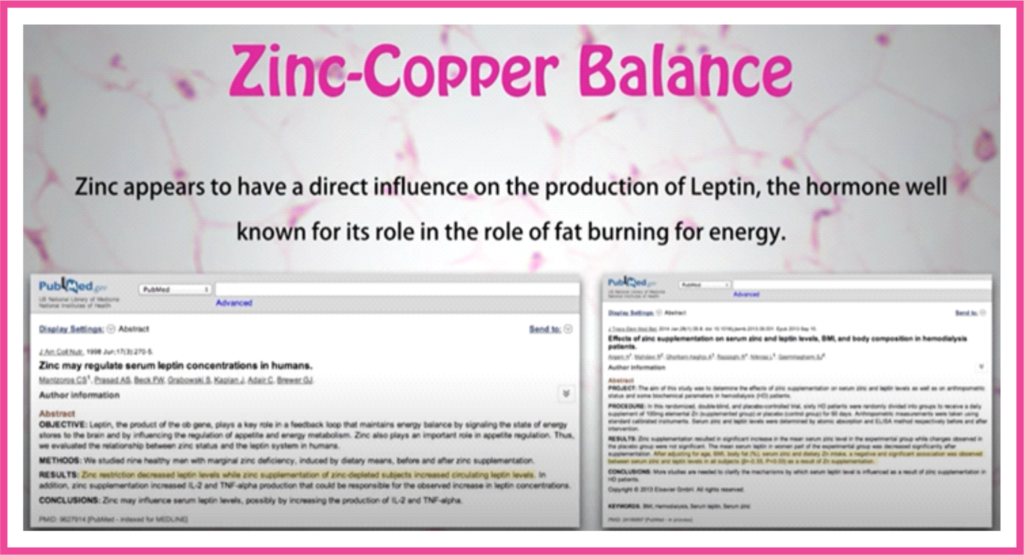
Leptin is the ‘fat hormone’. Zinc appears to have a direct influence on the production of Leptin, the hormone well known for its role in fat burning for energy.
If the pharmaceutical companies could come up with a drug that affected leptin levels correctly, it would be blockbuster – they’d sell billions of dollars’ worth of it. They’ve already made some attempts at it but have failed.
When you look at the studies (as in PubMed), you can see that “Zinc may regulate serum level concentrations in humans.†(1998). In another study in 2014, “Effective zinc supplementation on serum zinc and leptin levels, BMI and body composition in hemodialysis patientsâ€, it was found that “…a negative and significant association was observed between serum zinc and leptin levels in all subjects.â€
More on Zinc Deficiency and Leptin
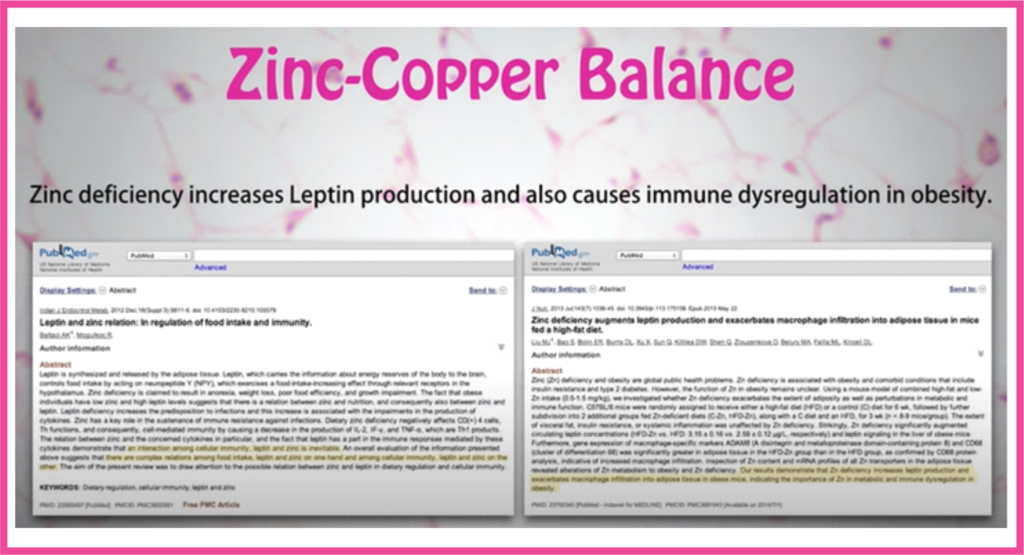
Zinc deficiency increases leptin production and causes immune dysregulation in obesity.
Another very recent study in 2012 stated, “…an interaction among cellular immunity, leptin and zinc is inevitable…there are complex relations among food intake, leptin and zinc on one hand, and among cellular immunity, leptin and zinc on the other.â€
In 2013, another study said, “Our results demonstrate that zinc deficiency increases leptin production and exacerbates macrophage infiltration into adipose tissue in obese mice, indicating the importance of zinc in metabolic and immune dysregulation in obesity.â€
Zinc Deficiency and Thyroid Function
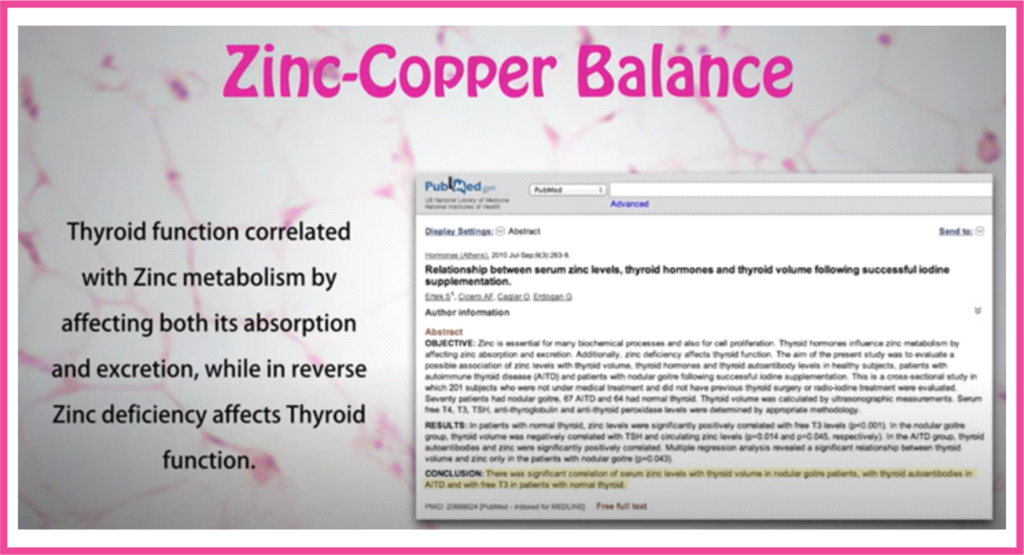
In the DEAFiciencies workshop, we covered in depth information on thyroid function and iodine deficiency.
Thyroid function correlated with zinc metabolism by affecting both its absorption and excretion, while in reverse zinc deficiency affects thyroid function. They work hand-in-hand.
In yet another PubMed study released in 2010 regarding zinc and thyroid function, the conclusion was, “There was significant correlation of serum zinc levels with thyroid volume in nodular goiter patients, with thyroid autoantibodies in AITD (autoimmune thyroid disease) and with free T3 in patients with normal thyroid.â€
So, whether you’re diseased or healthy, there is a direct correlation in the research. Zinc is intimately involved with thyroid function.
Zinc Deficiency Relative to Iodine
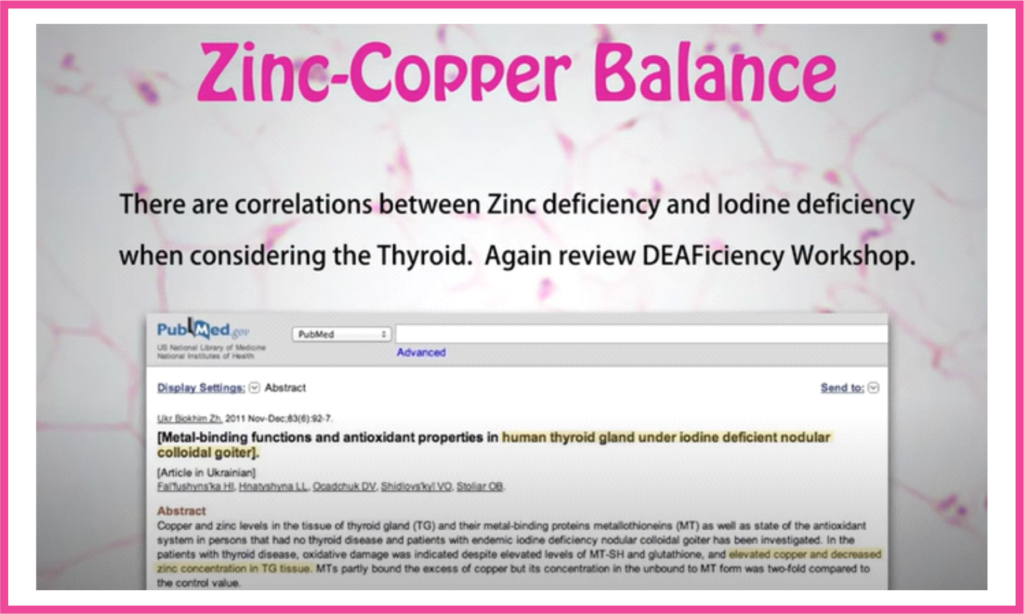
When considering the thyroid, there are correlations between zinc deficiency and iodine deficiency. Again, review the DEAFiciency Workshop.
In a PubMed 2011 study, “[Metal binding functions and antioxidant properties in human thyroid gland under iodine deficient nodular colloidal goiter]â€, it was found that “elevated copper and decreased zinc concentration in TG (thyroid goiter) tissue†were present.
The government guidelines for sufficient iodine intake give you just enough so that you don’t develop a visible goiter, yet most people are running around completely deficient in iodine. Every other organ in your body is starved for that essential nutrient while your thyroid has ‘just enough’ to function. How many people do you know who have thyroid dysfunction?
Years ago, iodine could be found in virtually every bread product made. But iodine was dropped from bread production in favor of ‘bromination’, which greatly antagonizes the absorption of iodine. Also, cows would graze on grass, getting iodine. Now they eat corn – no iodine or other nutrients. Â
The Role in Essential Fatty Acids…

Zinc appears to play a very critical role in use of Essential Fatty Acids. Once again, it would be good to review the information in the DEAFiciency Workshop on this point.
As far back as 1980, a PubMed study showed that “There is substantial evidence to suggest that Anorexia Nervosa is due to a combined deficiency of zinc and Essential Fatty Acids.â€
Your brain doesn’t have the necessary EFAs to repair itself, and the whole problem is promulgated because of zinc-copper imbalance.
…and Autism
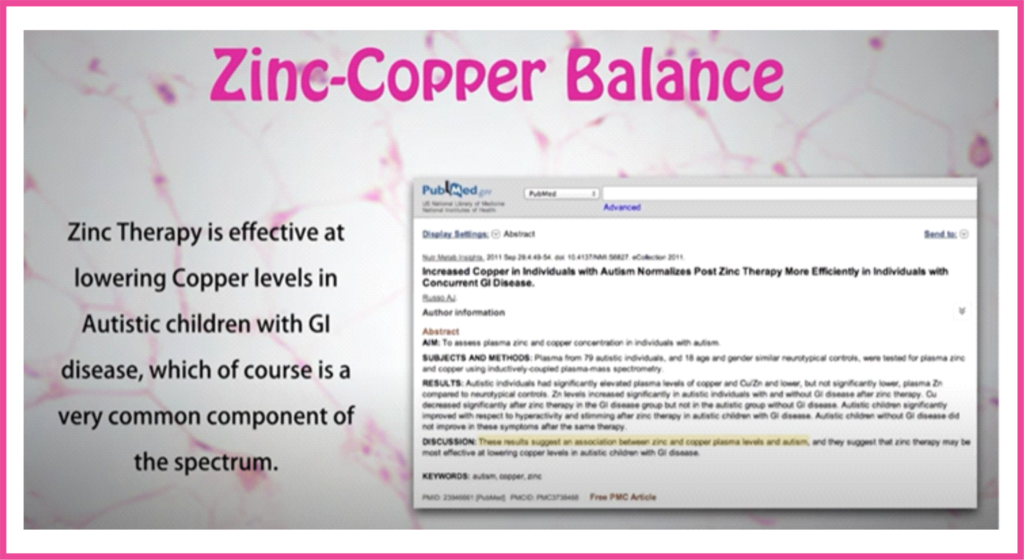
Zinc therapy is effective at lowering copper levels in Autistic children with Gastro-Intestinal disease, which of course is a very common component of the spectrum. These children almost always have high serum copper levels and they often have bowel dysfunctions, gluten sensitivity and food intolerances.
The results of a 2011 study showed, “…an association between zinc and copper plasma levels and autismâ€, and that “…zinc therapy may be most effective.â€
The Industrial Connections
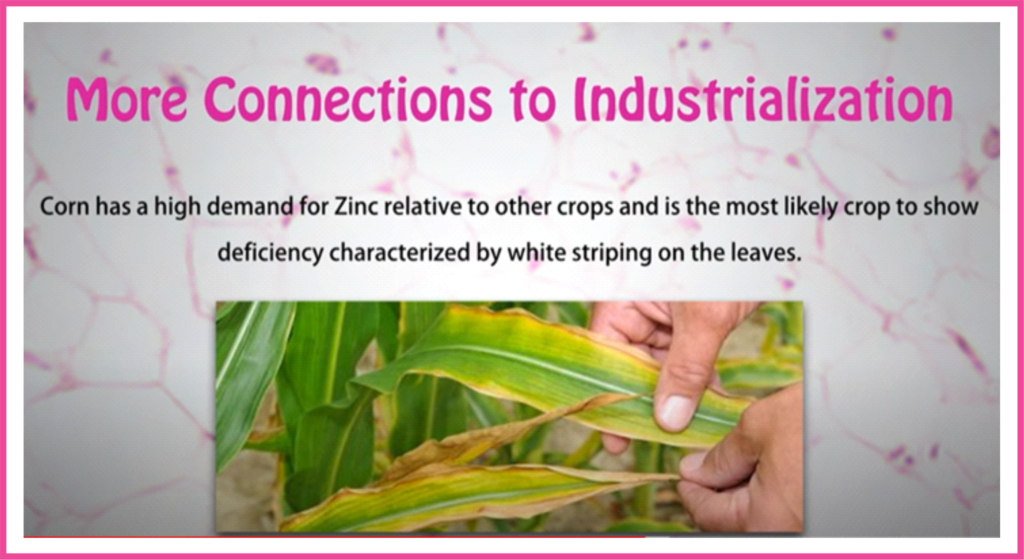
Corn has a high demand for Zinc relative to other crops and is the most likely crop to show deficiency characterized by white striping on the leaves. Did you think that corn is supposed to look like the picture above?
We often see the leaves with white stripes and yellow edges – that’s zinc deficient corn. If you Google “zinc deficiency in cornâ€, you’ll find that university researchers are pushing and pushing for including zinc in fertilizers. Why would that be? Because this zinc deficiency is a huge problem. Scientists see that all these crops are depleting vital nutrients out of the soil, and most farmers don’t really care about spending the money to add zinc to their fertilizers. The corn will still sell – zinc or no zinc! It’s industrialization.
This begs the question: should we be relying on corn as the base of our food chain? But as we know, corn is in everything.
Blood Testing
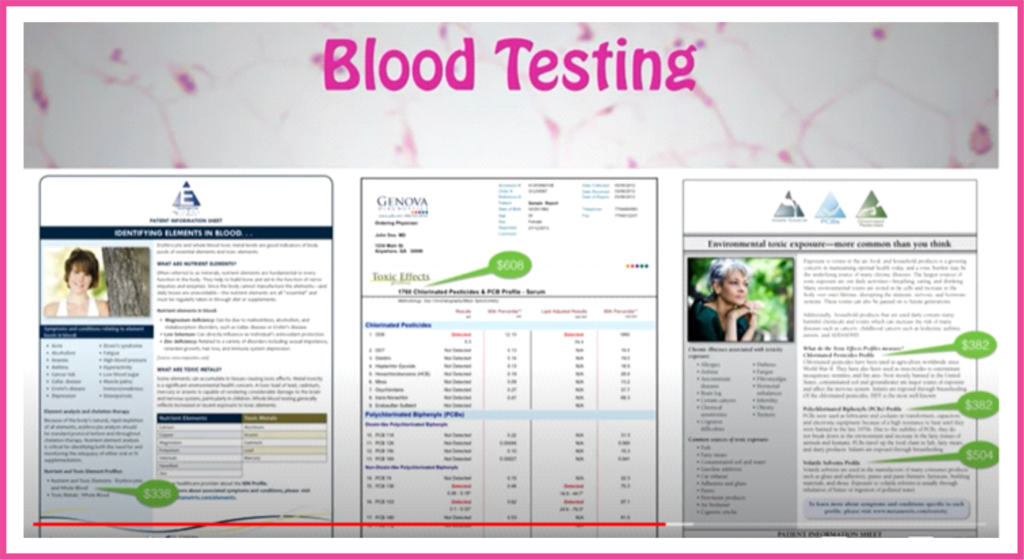
If you desire, you can do blood testing for your levels of zinc, copper, etc. Unfortunately, the blood testing is a little expensive. As of 2014, a Nutrient and Toxic Elements test cost $338.00. This looks at the levels of various metals in the blood. We can do all these tests, if you really want to do them, but we don’t push them on our patients. There are also surveys that help you to know where you stand.
There is a Toxic Effects Test for chemicals and pesticides in the blood – basically a “body burden†test. This test costs $608.00. Why would you need that test? Just one of the chemical groups tested, chlorinated pesticides, is offered because, “Chlorinated pesticides have been used in agriculture worldwide since World War II.†We’ve all been exposed to things like this for a long time! They affect the nervous system first.
They are also used as insecticides to kill mosquitoes, termites, and fire ants. The most well-known of these is DDT, now banned in the US. Then there are PCBs (polychlorinated bisphenols) in plastics. Due to the stability of PCBs, they do not breakdown in the environment and increase in the fatty tissues of both animals and humans. Infants are exposed through breastmilk.
There are tons and tons of chemicals such as these being dumped into our soil and groundwater every year! Everywhere we go, we are contaminated by these unnatural chemicals.
The Zinc Challenge Test
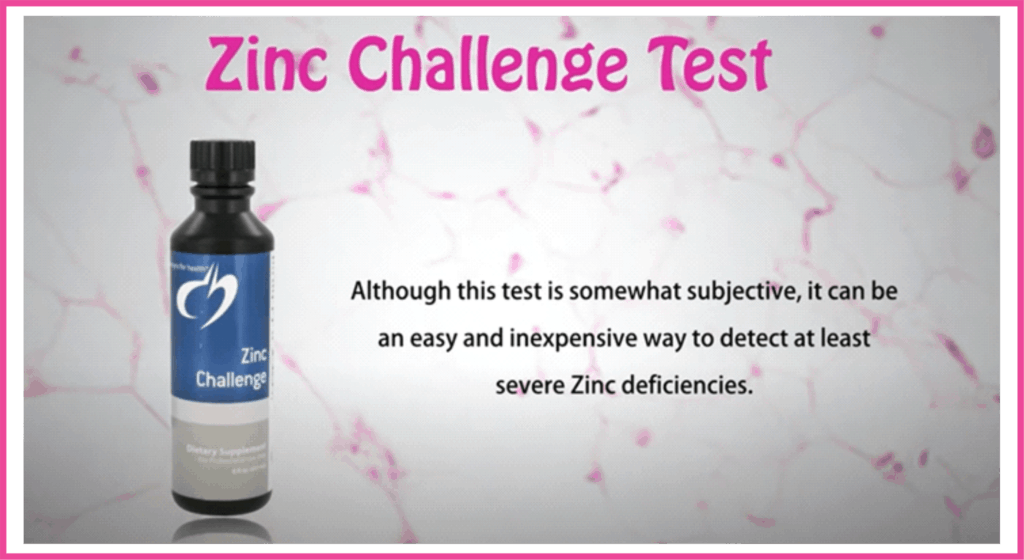
Although this test is somewhat subjective, it can be an easy and inexpensive way to detect at least severe zinc deficiencies. The Zinc Challenge formula is produced by Designs for Health. (Unfortunately as of 2020 this product has been discontinued by the manufacturer as it wasn’t a large seller)
What Have We Learned?

- You MUST eliminate environmental toxic burden (drugs, cleaners, body care, etc.)
- You MUST exercise. Exercise stimulates consumption of fat for energy when sugar stores have been depleted, ONLY at which time can effective detoxification take place. The more energy demand, the faster this process can occur.
- If you have not done so, watch the “DEAFicient†and “DEAFiciencies Fulfilled†Workshops on our YouTube channel. Unless deficiencies are fulfilled, function cannot be re-established. This is an absolute necessity.
- Work toward correcting the Zinc-Copper imbalance if suspected or, if necessary, test further.
- Utilize an effective and safe detox aid like Systemic Formulas IDS. The way IDS works is different. Most detoxes that you see in stores are really colon cleanses, designed to go in and bind up toxins in your intestines and flush it out – that’s the idea. Real detox has nothing to do with having a diarrhea blowout.
- Proper detox is a systemic effect – dumping toxins from inside your cells, not just your intestines. IDS is a two-part detox system. The first part just gives the body what it needs to allow the innate intelligence of the body to cleanse itself on a cellular level. The second part is the binding system which absorbs and eliminates the released toxins out of the system.
- First price adjustments since PreCOVID start Monday 4/14 - April 9, 2025
- Best Anatomical Sleep - April 2, 2025
- Robert Kennedy Jr how head of HHS - March 20, 2025
- Deductibles Reset Jan 1st - December 5, 2024
- Slacking on Home Care? - July 15, 2024
- A Tale of Two Spines - June 26, 2024
- Never again pay for a “Discount Program” - April 18, 2024
- Ready for some change? - December 28, 2023
- Good health more affordable than ever - May 16, 2023
- How bad will 2023 get? - January 25, 2023
